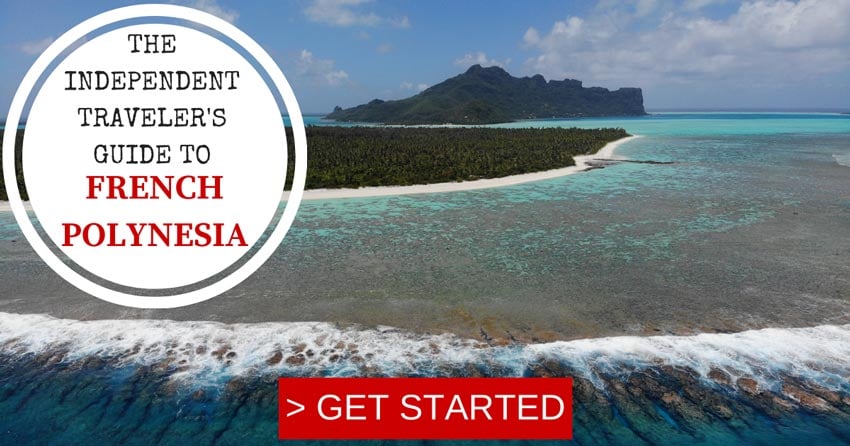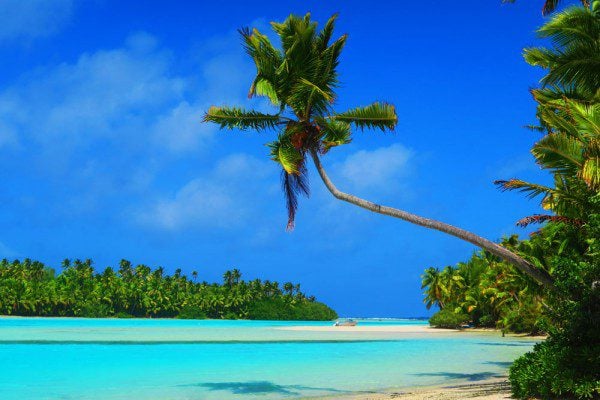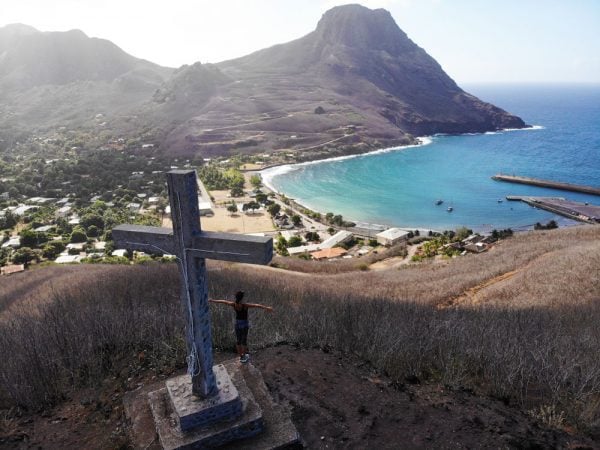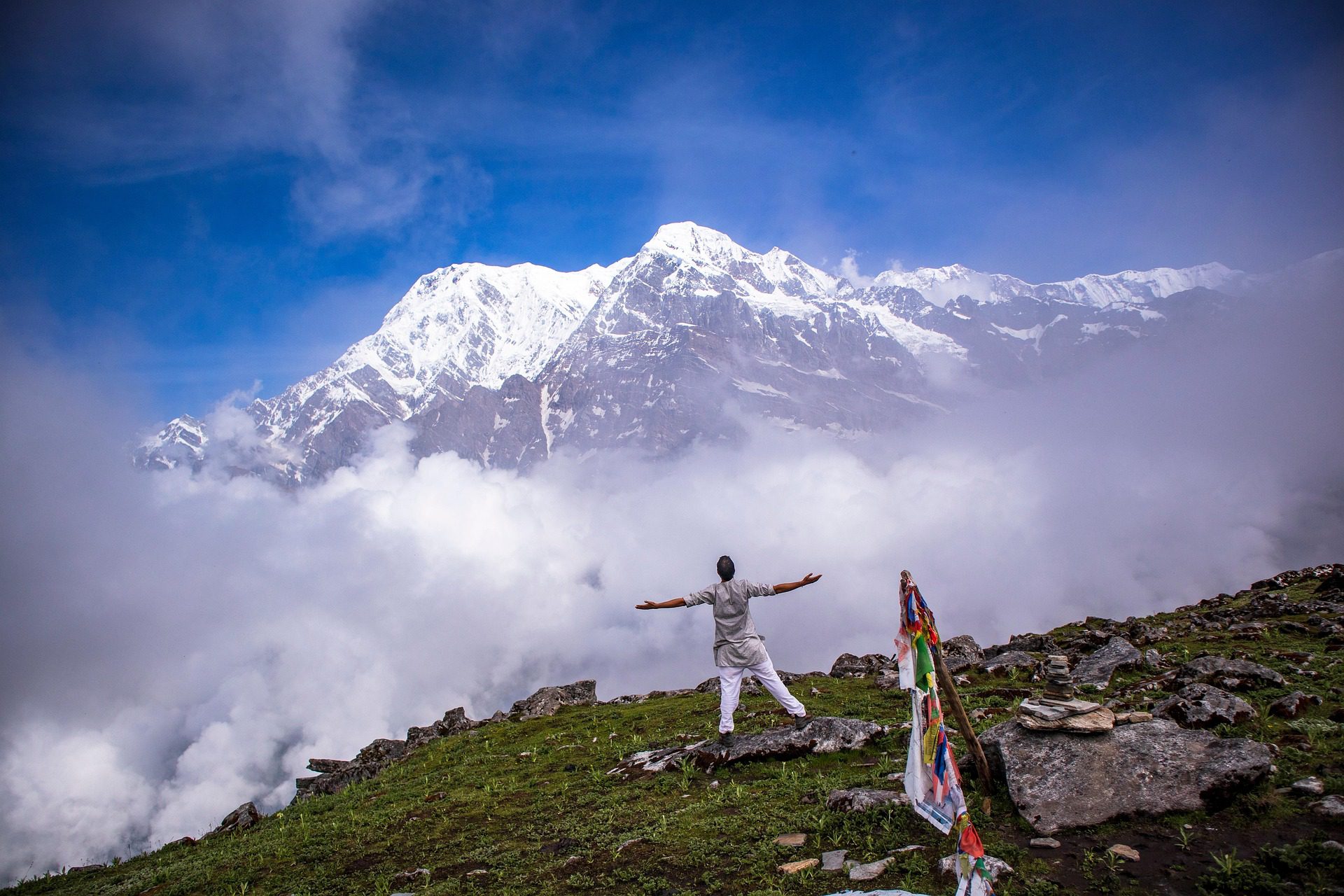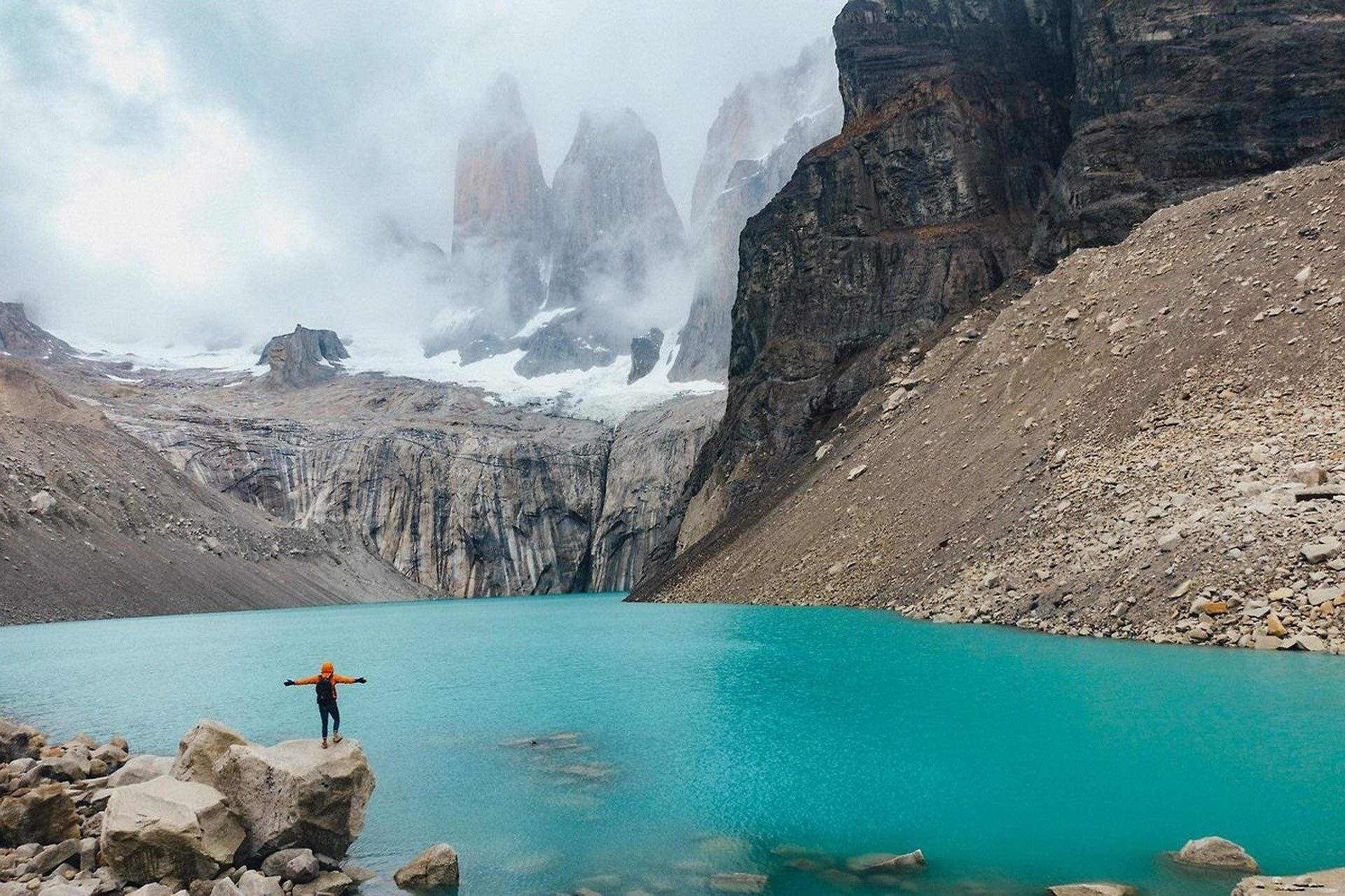The Mysterious Islands At The End Of The World
The Marquesas Islands of French Polynesia in the South Pacific Ocean are about as remote as you can go in shorts and t-shirt. Impressing the first European explorers with their dramatic natural beauty and exotic local culture, this group of islands are the ultimate adventure for the off the beaten track traveler.
Heading to French Polynesia? In-depth island guides to all 5 archipelagos await you, including sample itineraries and essential travel tips & tricks.
The adventure begins with arrival in French Polynesia’s main island – Tahiti, which rises out of the ocean’s depths like a huge figure eight. Tahiti is home to over 70% of the French territory’s 276,000 residents and to the territory’s only ‘proper’ city. Between shopping for exotic fruits in the Papeete market and visiting the island’s famous black sand beaches, an intense feeling of wanting to stay a bit longer and explore the gateway to paradise takes over. But there’s so much to see and so little time. After all, the most precious moments and things in life are always scarce.
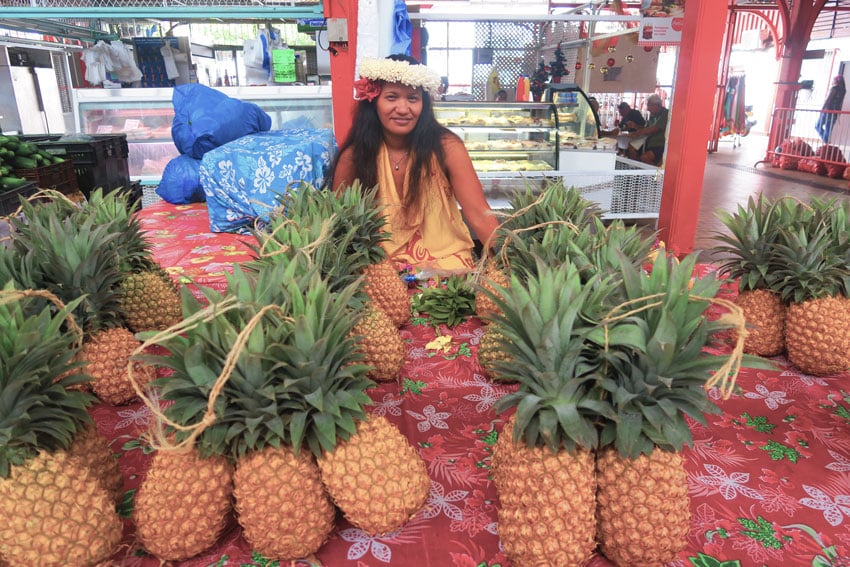
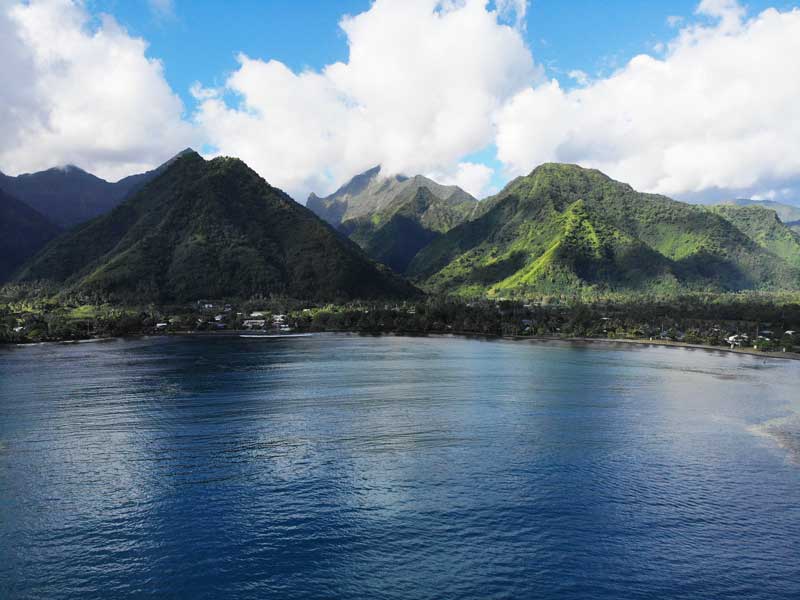
Off To The Marquesas Islands
Early morning, it’s time to catch the Air Tahiti flight to the Marquesas Islands. French Polynesia’s 118 islands and atolls cover a distance of the ocean roughly equal to the size of Europe. Like all domestic flights in this part of the world, the three-hour journey to Nuku Hiva Island is a breathtaking one, flying over Bora Bora and the donut-shaped coral atolls of the Tuamotus – the largest chain of atolls in the world.
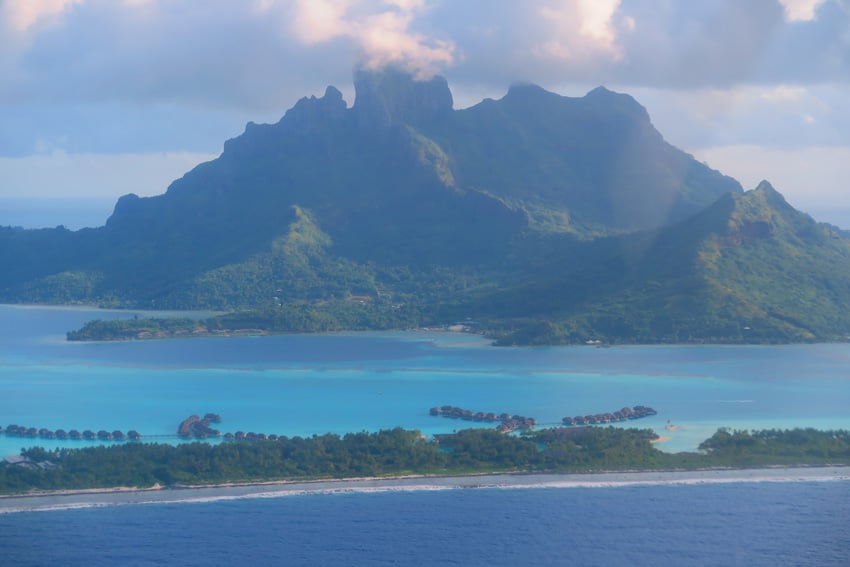
The Marquesas Islands are among the most remote islands in the world, lying over 4,500 km from the nearest continental landmass in Mexico. Its original settlers likely arrived from Samoa, before letting curiosity lead them as far north as Hawaii and as far east as Easter Island. Living in complete isolation led to the creation of a unique ancient culture with its own language, religion, art, genetic pool, and even a cannibalistic past. Contact with Europeans in the 16th century ended this isolation, bringing with it social, technological, and religious changes, but also diseases that eradicated the estimated 100,000 population to a mere 4,000 by the start of the 20th century. These days, Marquesans enjoy life in the slow lane, primarily living off the making of copra, fishing, government jobs, and small-scale tourism.
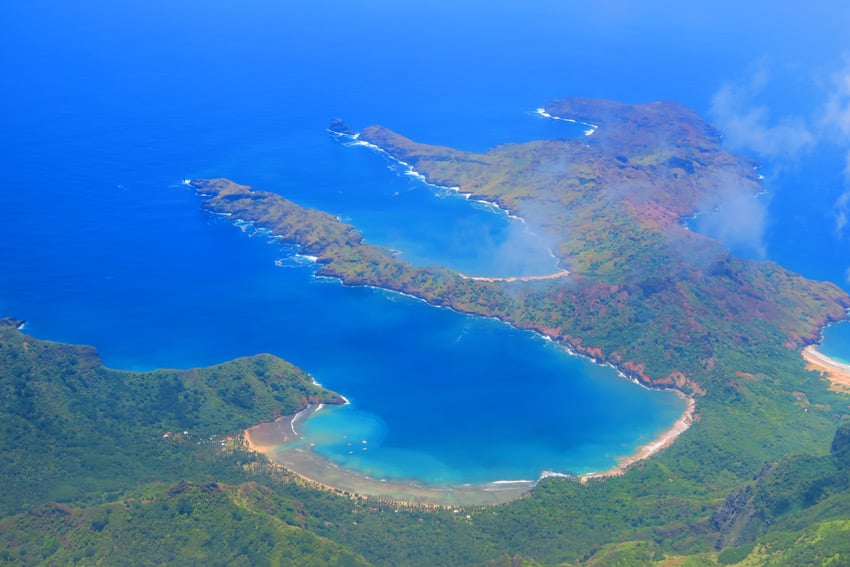
The small ATR lands on a flat and dry section of the island known as ‘desert land’. Sharply resembling the late Hugo Chavez, my host, Alvane Alvarado, greets me at the airport with his Land Rover for the 90-minute drive to his family pension in the island’s only town – Taiohae. Over here, a Land Rover to the locals is what a Honda Civic is for families back home. A French family living in Tahiti squeezes into the jeep with me. The husband, Laurent, tells me in half English, half French that back when he visited this island over 20 years ago as a French soldier, the only way to get from the airport to town was on a boat.
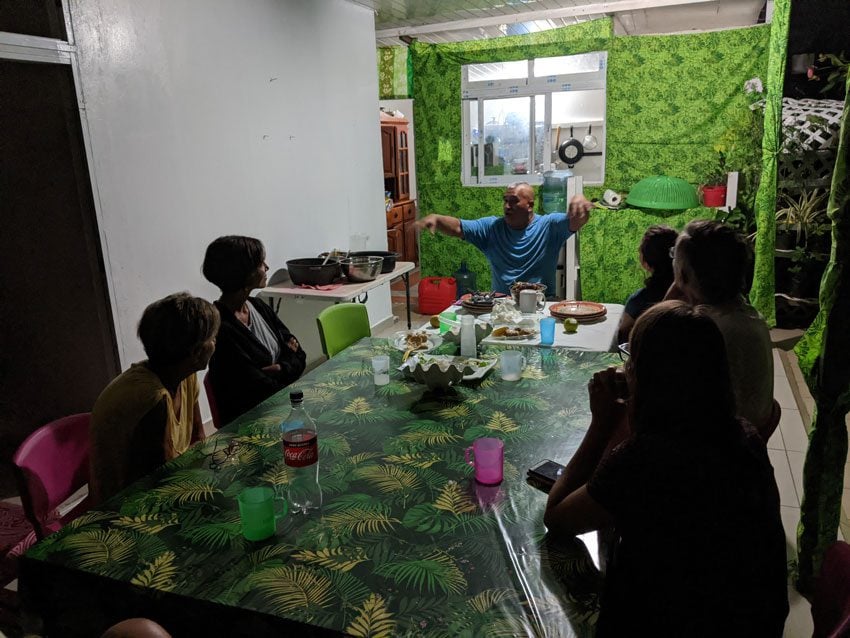
The long ride to Taiohae is not one you’ll be complaining about, far more interesting than your usual airport to hotel gridlocked journey. Slicing its way from one side of the island to the other, the winding road – scary at times, gives us our first glimpse of how diverse Nuku Hiva’s landscape and climate are. We pass the island’s version of the Grand Canyon, waterfalls, Swiss-looking plateaus and forests with pine trees as far as the eye can see. Did we land on the right tropical island?
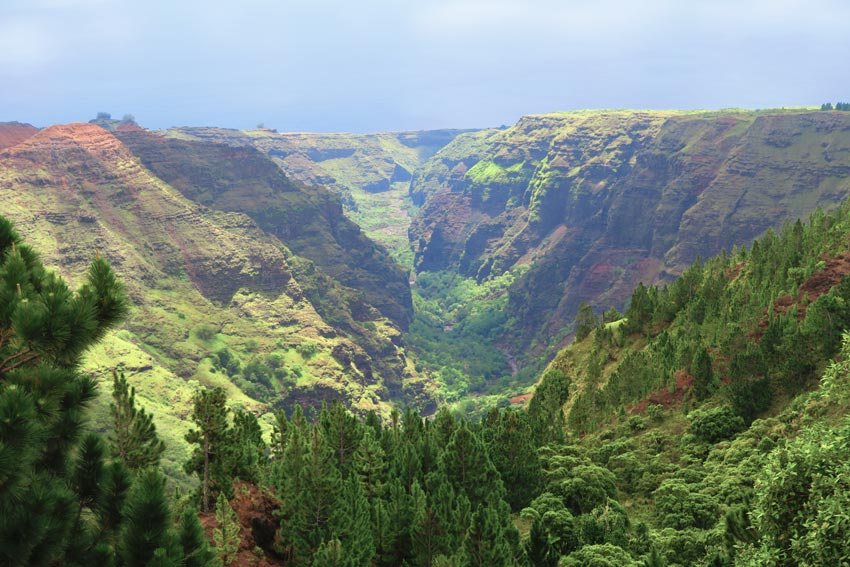
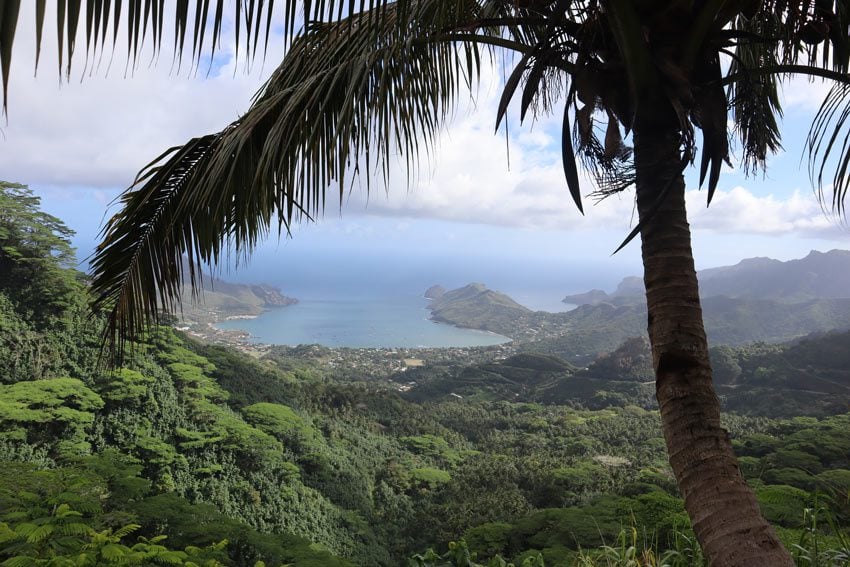
At the pension, Alvane’s wife Claudine is busy sewing a costume for her 12-year-old daughter. In just a few hours, children and parents from around the island will gather in the town square to celebrate Marquesan culture through song, dance and local food. With the final fitting complete, Claudine prepares tonight’s dinner: carpaccio made from locally caught red tuna and breadfruit french fries. The family heads to town just as the night sky shines with millions of stars.
Hike To The Hidden Waterfall
The following day, I met local guide Thierry at the pier. Together with six other curious visitors and one villager heading home, we embark on a short boat ride to Hakatea Bay. Unlike other islands in French Polynesia, the Marquesas Islands are not protected by a coral reef and Thierry’s tiny boat struggles with the force of the currents until entering the safety of the bay. We arrive just as local fishermen return with the catch of the day, mooring their boats in the emerald waters and landing on a beach once used in the American version of Survivor. In front of us are sharp basaltic cliffs that hide the Hakaui Valley. Somewhere in there lies the highest waterfall in French Polynesia, and that’s exactly where we’re heading.
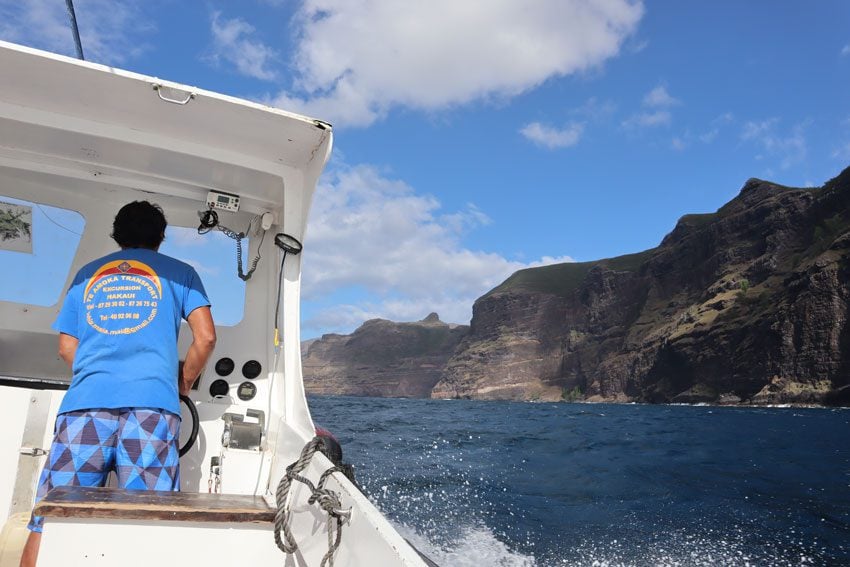
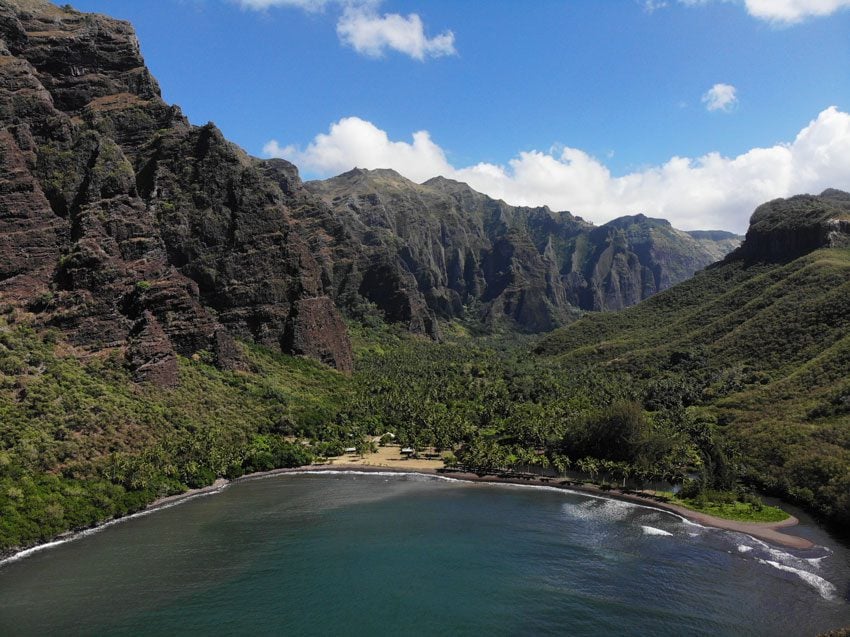
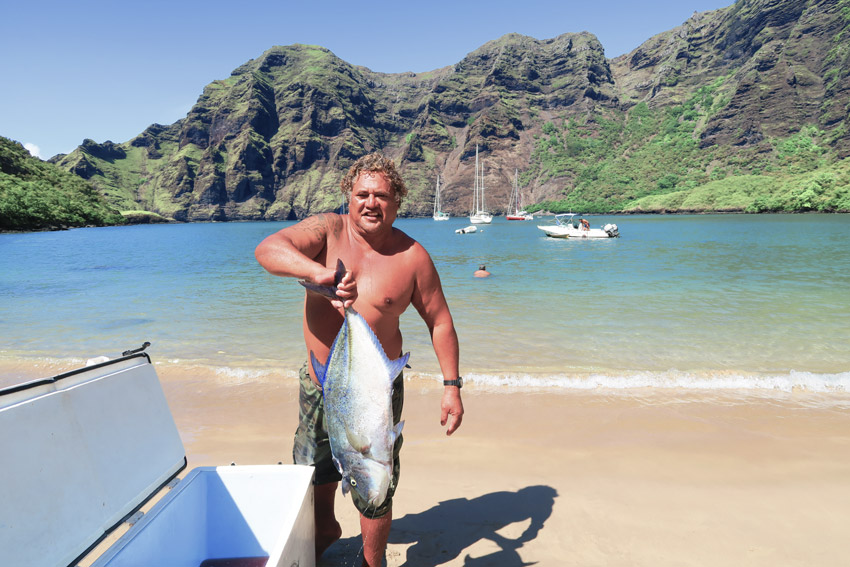
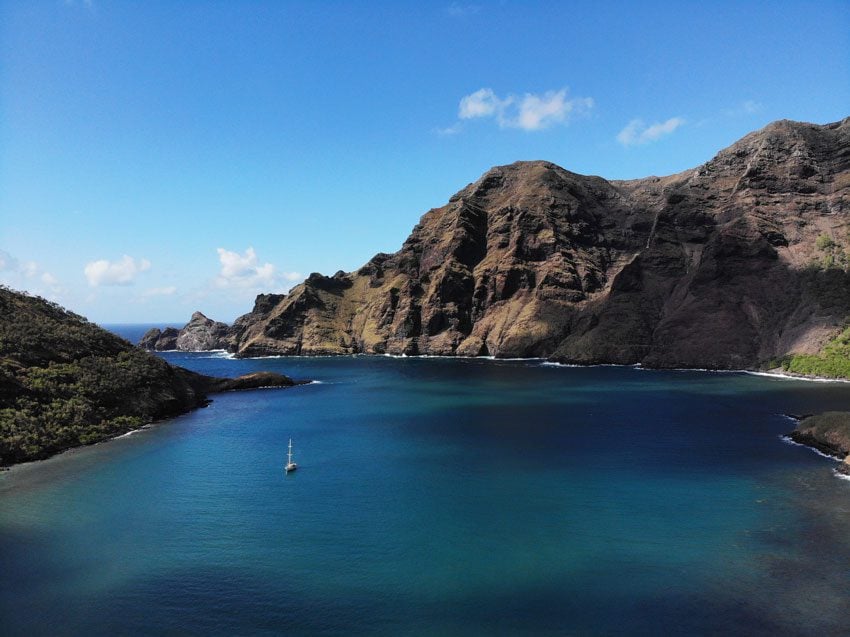
We enter the valley on a trail known as the ancient royal road. Built over 1,000 years ago to serve the valley’s thousands of residents, only stone platforms, food storage pits and sacred tiki statues remain, though even those are slowly consumed by the massive roots of the Polynesian chestnut tree. The valley’s residents didn’t need a supermarket around here, as Thierry points out to papaya, mango and even kapok nuts which house cotton-like fibers. But they also didn’t need a pharmacy, with an infinite supply of noni and tamanu nuts, both known for their medicinal powers.
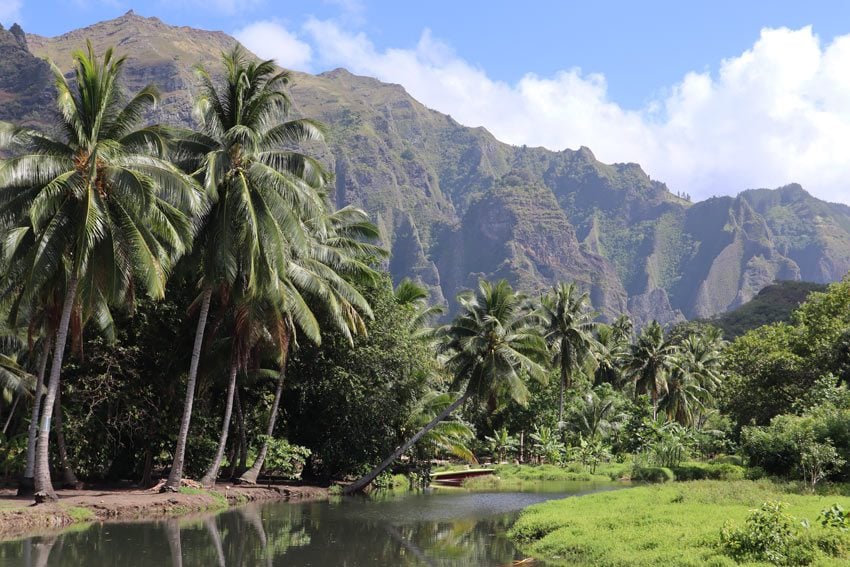
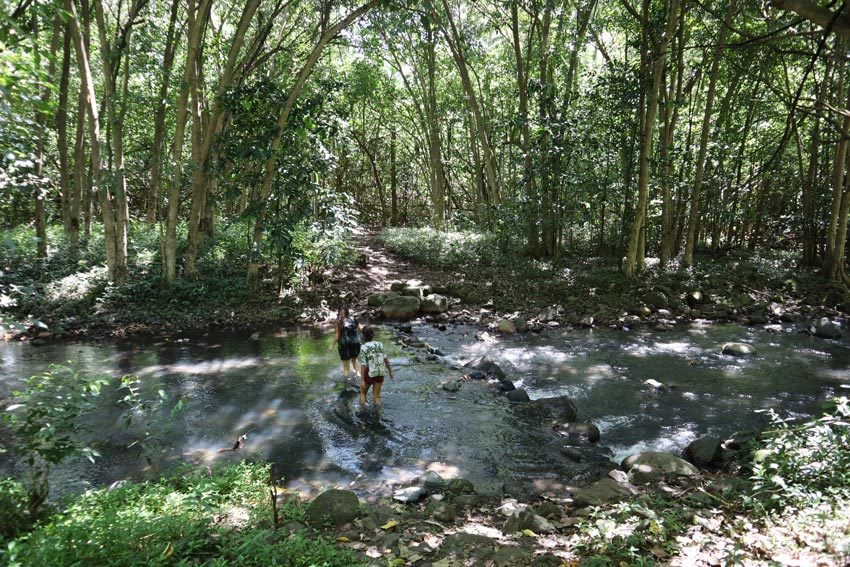
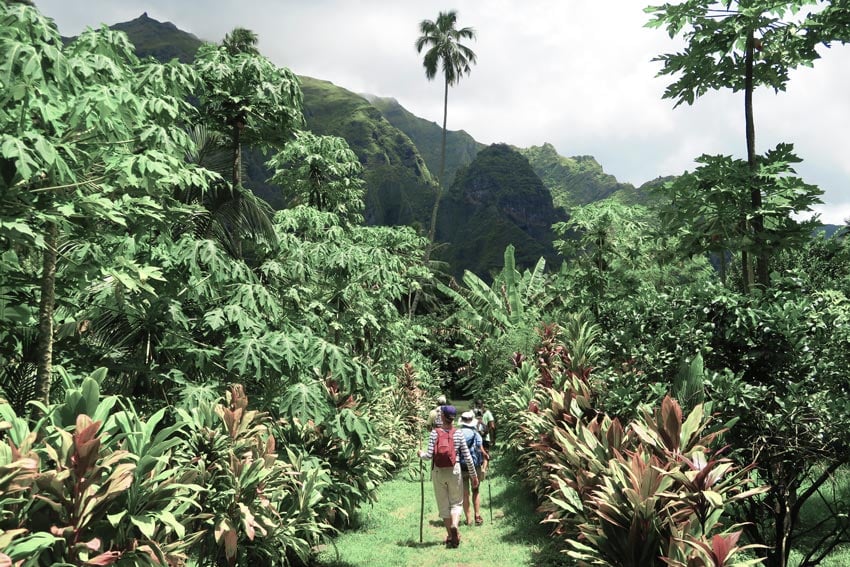
Crossing a few rivers and battling a few mosquitoes, we reach a clearing in the rainforest and Thierry reminds us to look up. As if hiding from civilization, the Vaipo Waterfall quietly but impressively glides 350 meters from the pizza slice-shaped basaltic cliffs. As if we’ve just discovered the final piece of a treasure map, we rush with newfound energy to discover its source, ultimately splashing in a fresh pool that is happy to entertain the rare guests that make it here.
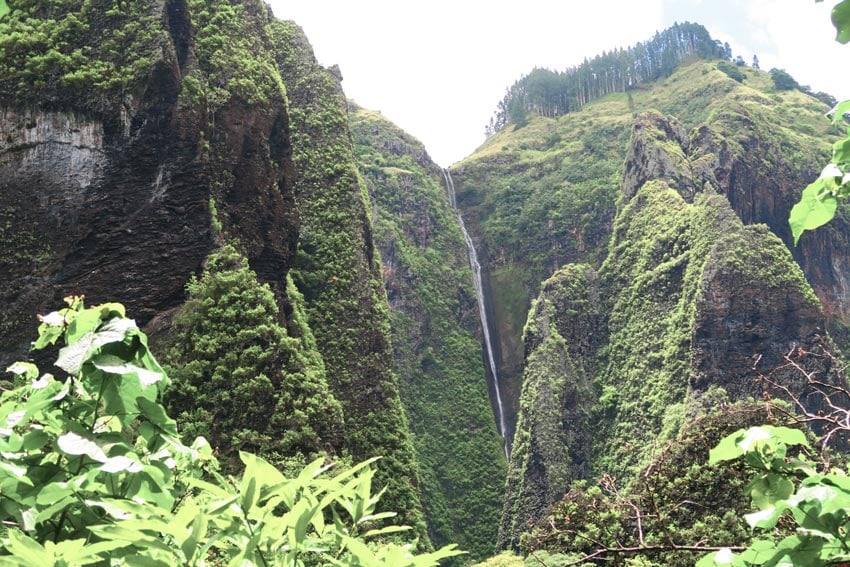
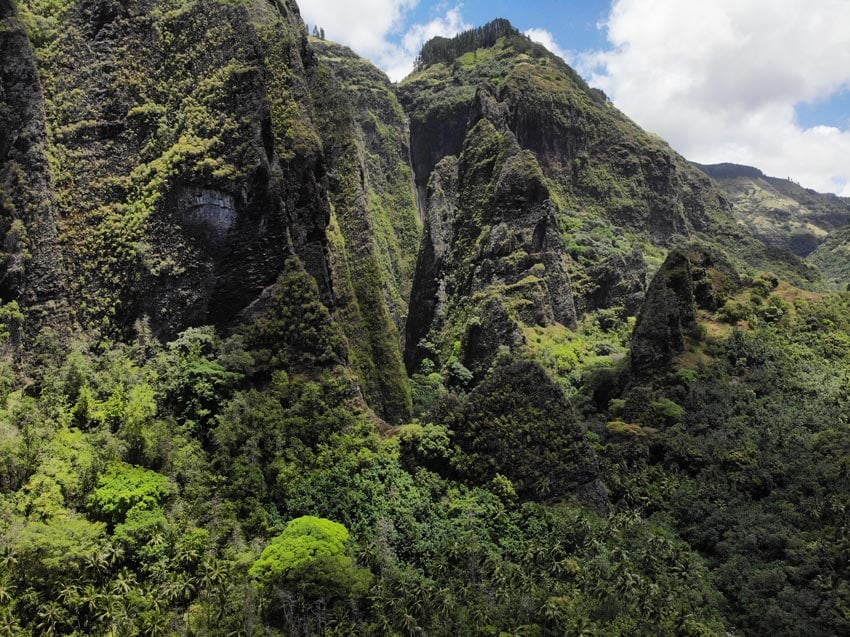
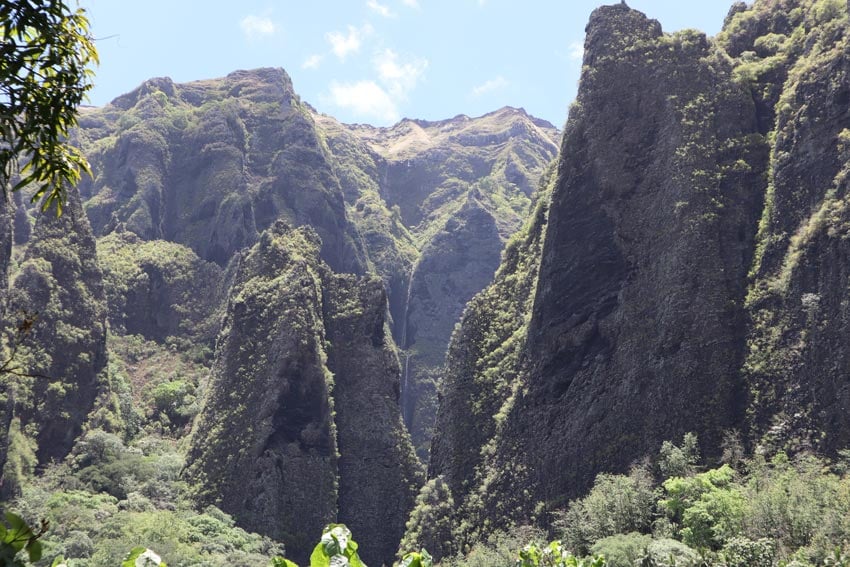
The Island Of Gauguin & Brel
After a few more adventurous days in Nuku Hiva, it’s back to the airport for another scenic flight, this time 40 minutes south to Hiva Oa Island. Somehow, the pilot manages to land in a narrow valley high up in the mountains. I am greeted at the airport with a flower necklace, hand-made a few hours earlier by my pension host Tanya, whose smile lights up the small terminal. With a population of only 3,000 – getting lost in Hiva Oa is not a problem. Maybe this is what attracted French painter Paul Gauguin and Belgian singer Jacques Brel, who both lived out their final days on the island. Buried among local islanders and missionaries atop the town of Atuona, a hike to the Calvary Cemetery is a pilgrimage not to be missed. In Hiva Oa, even the dead enjoy panoramic views.
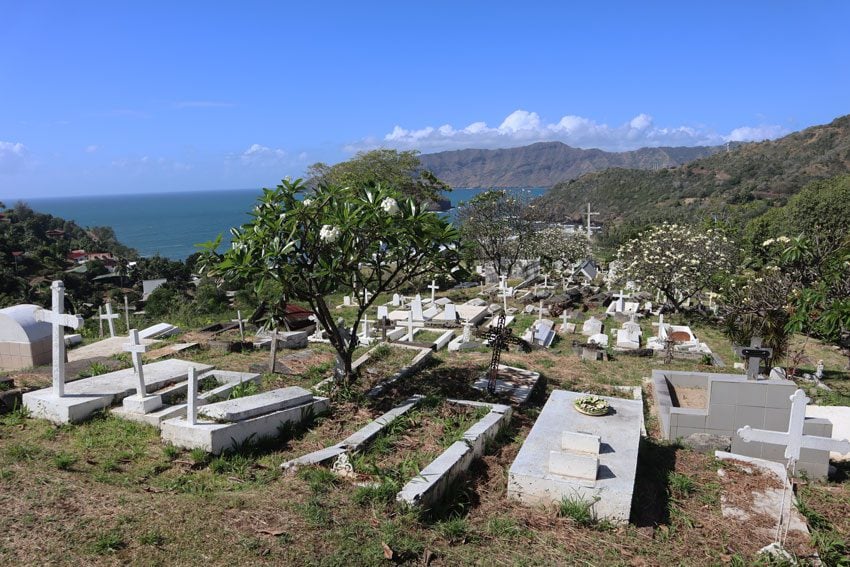
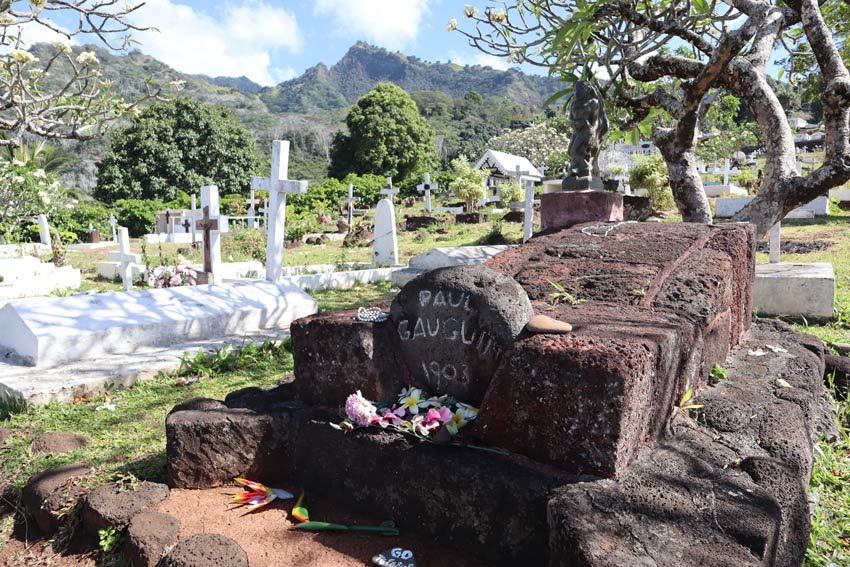
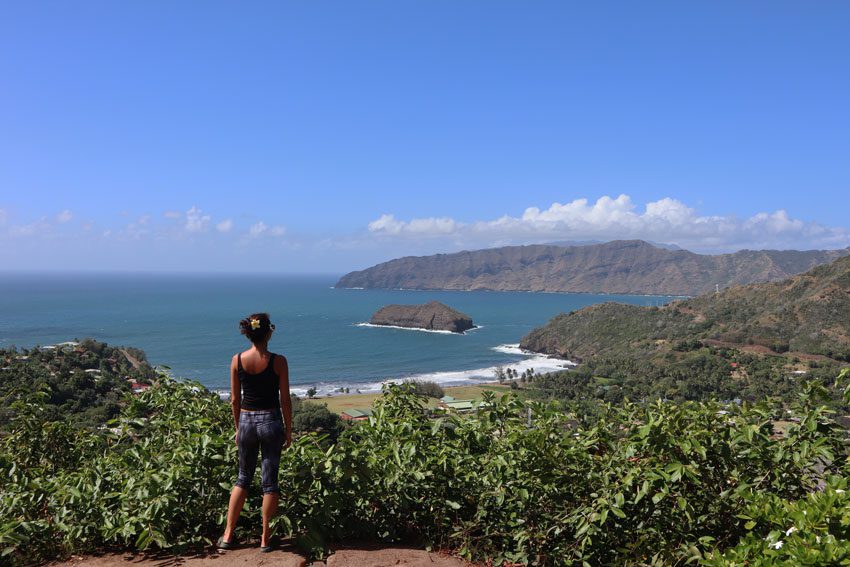
The next day, a small Suzuki jeep is dropped off at my pension. I set out to explore Hiva Oa’s wild north coast, a 90-kilometer adventure that would take the entire day. On this side of the island, a one-lane dirt road snakes its way atop the rugged cliffs which open to bay after bay of hidden beaches and sleepy villages. Occasionally, you share the road with a family of wild goats, but that’s about it. In the extreme heat of a hot Saturday, I stop for directions as a family hoses down their boiling tin roof in an effort to keep the temperature inside bearable.
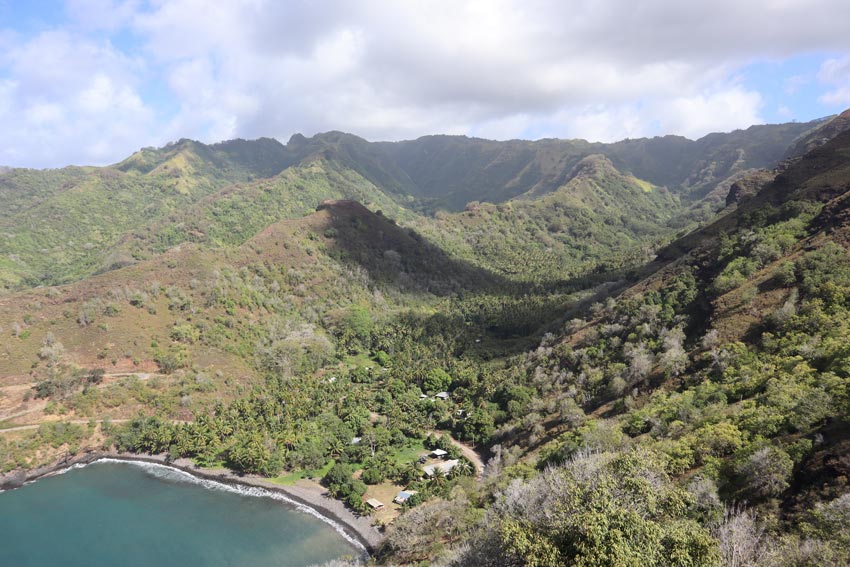
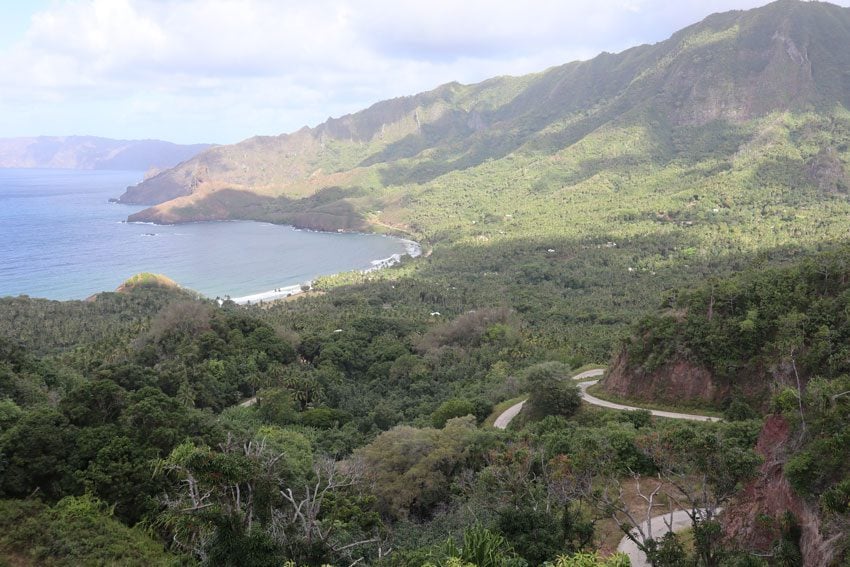
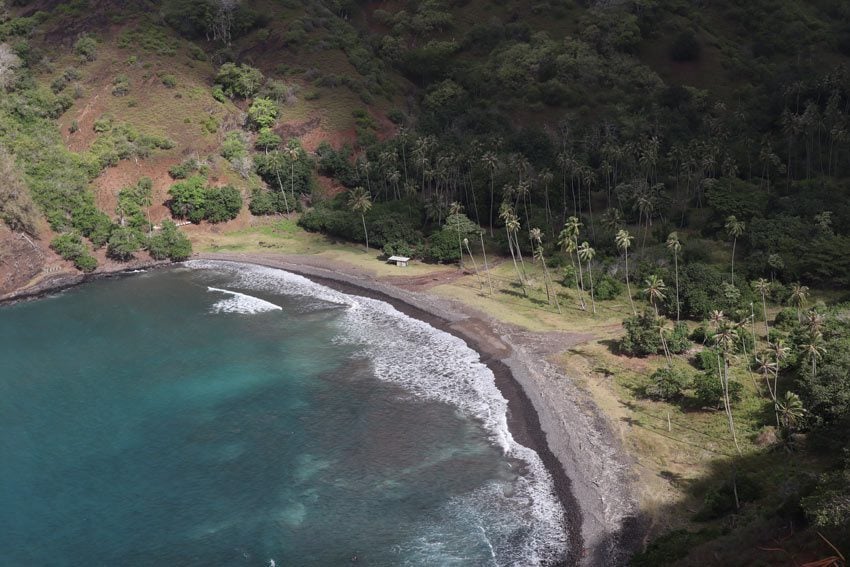
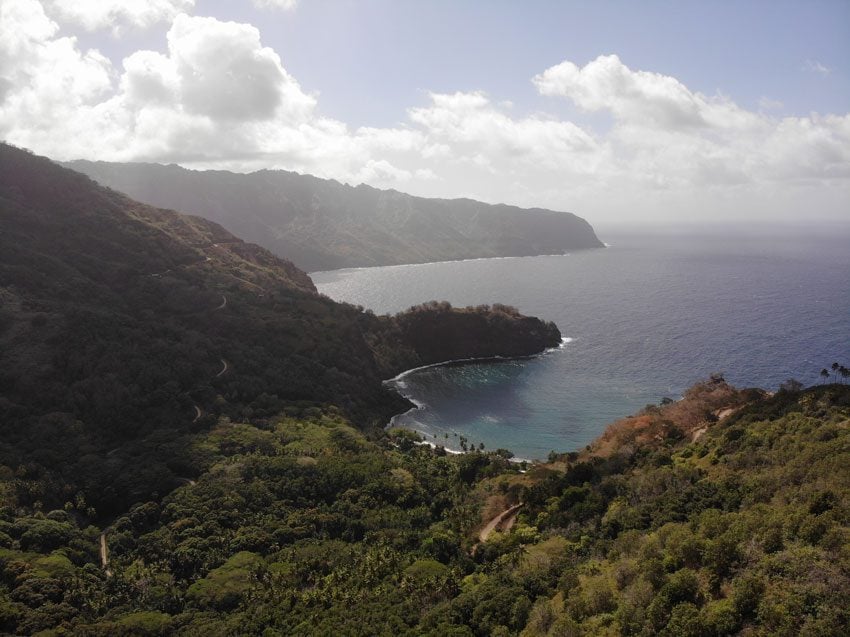
Two hours after leaving town, I make it to Eiaone Bay, literally the end of the road. The valley that spills into this beautiful bay hides one of the most impressive ancient Polynesian sites – the real reason for driving all the way out here. The clouds, the blowing breeze, and the fact that I am completely alone out here, all set the perfect stage for exploring the mysterious Lipona Archeological Site. Stacked atop two stone platforms are giant tiki stone statues. Some appear to be smiling, others have six fingers and one is even taller than an NBA player. As in relatively close Easter Island, nobody quite knows how or why these statues were erected thousands of years ago. It is absolutely forbidden to move even the smallest tiki statue, believed by the Marquesans to possess supernatural and magical powers called mana.
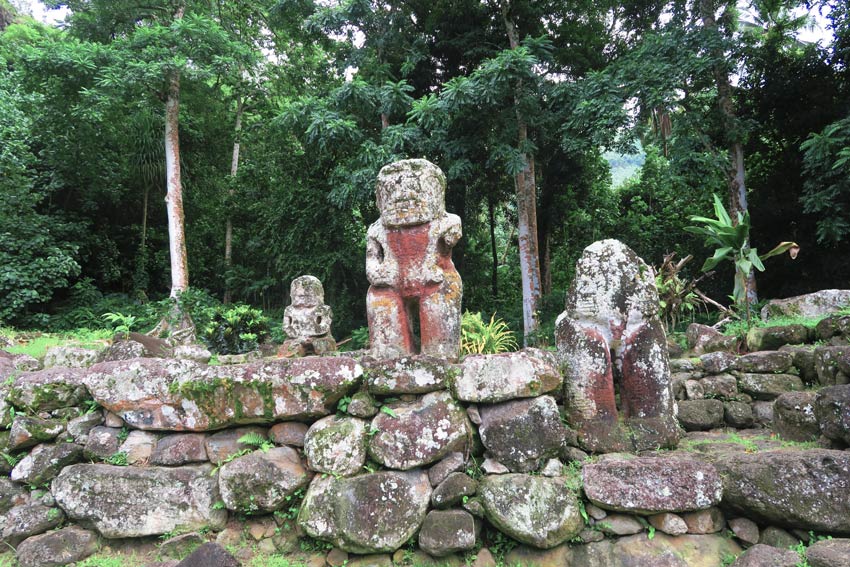
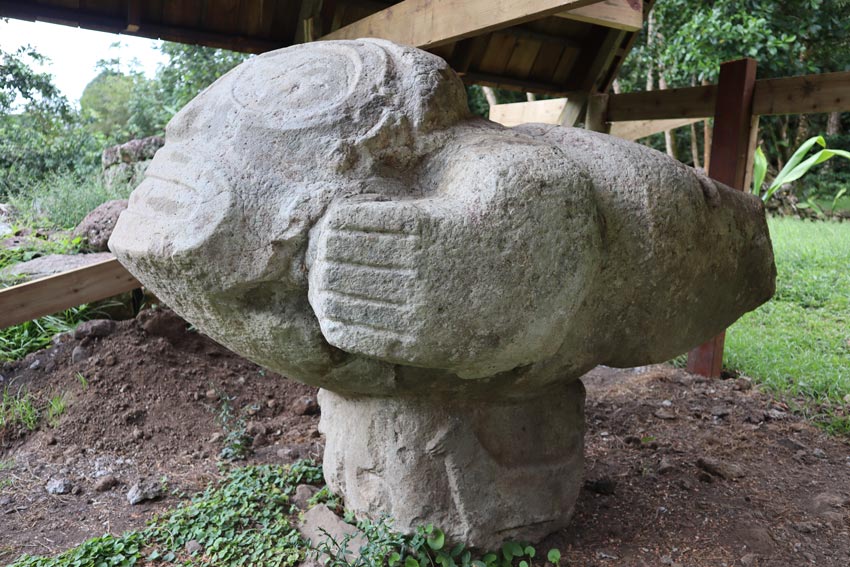
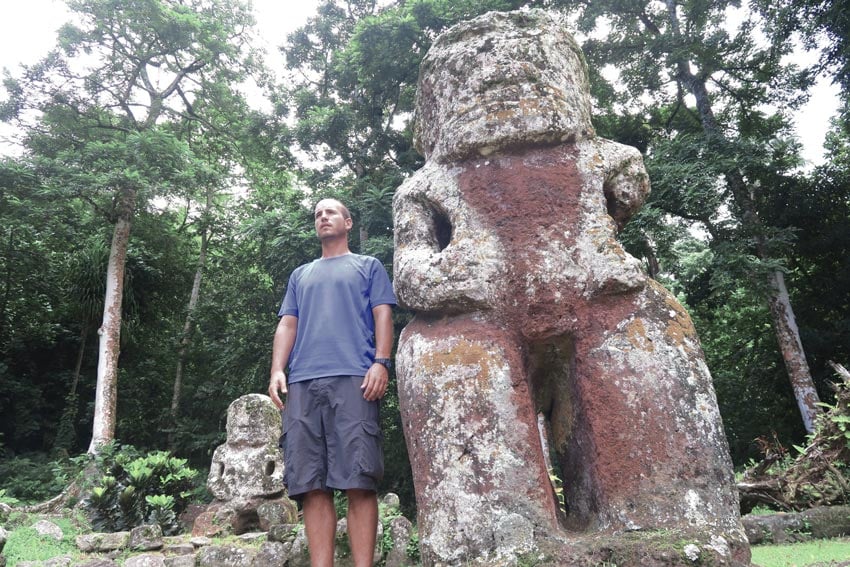
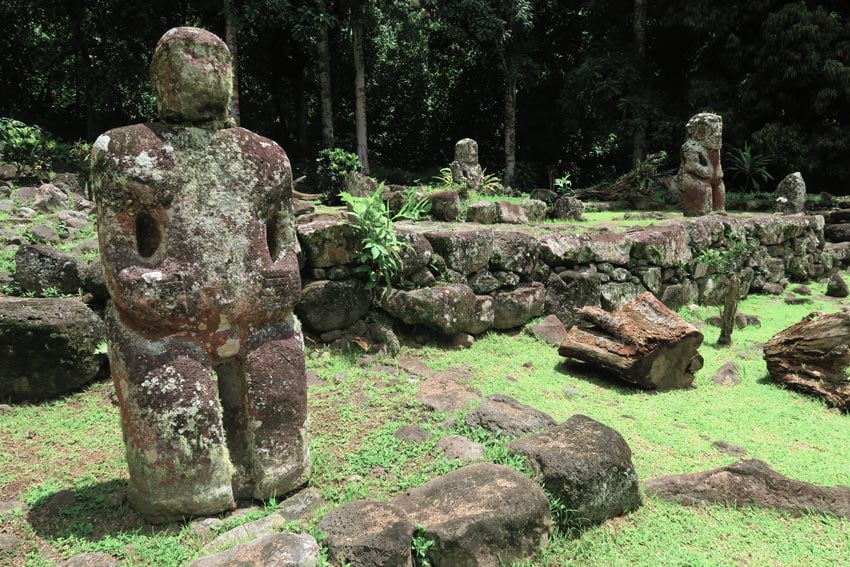
All that’s left now is to turn around the jeep and somehow get back to the village before night falls…
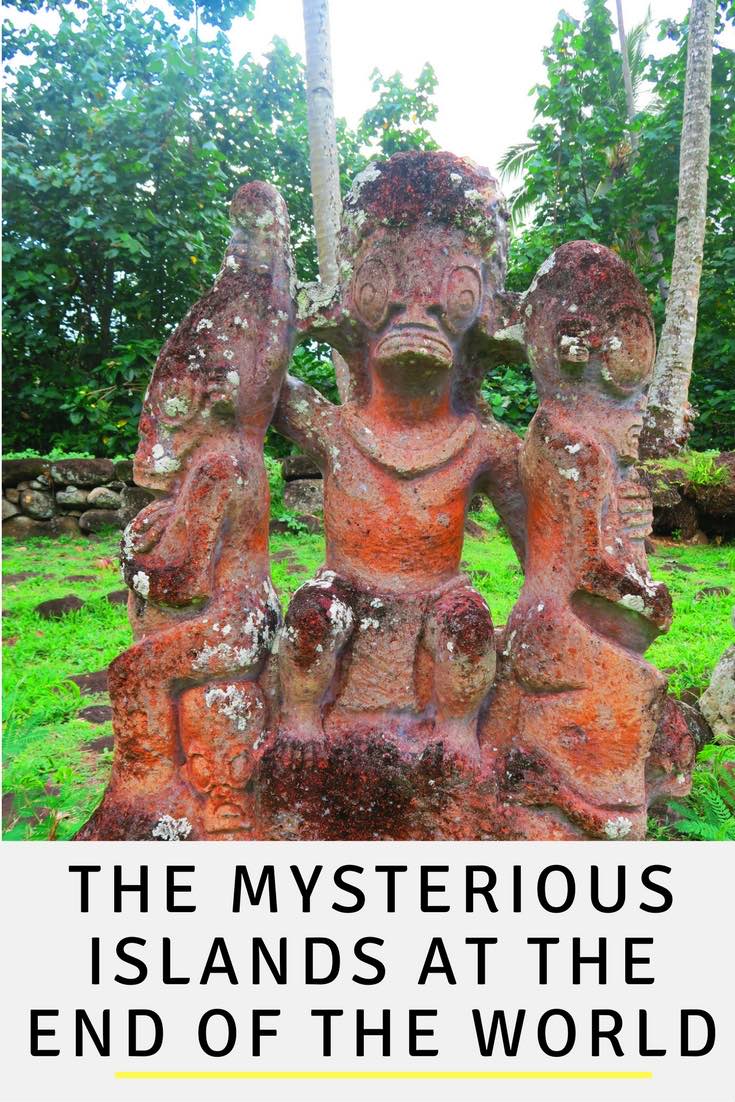
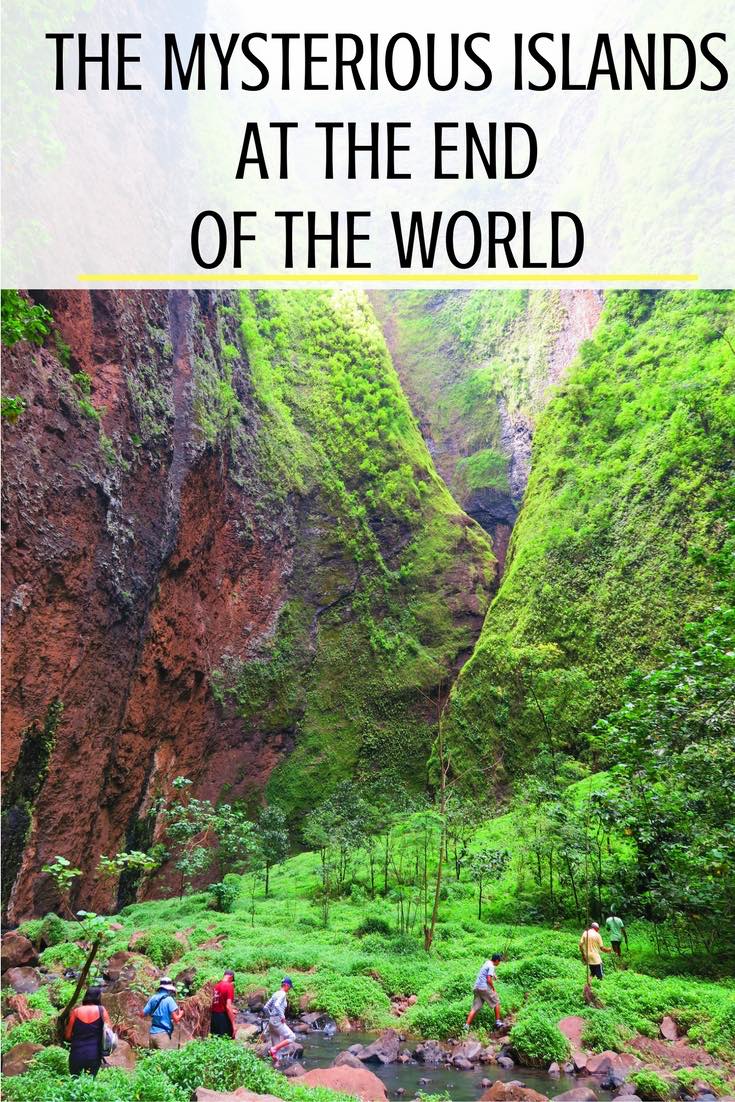
Pin These Photos To Your Favorite Boards!
Tahiti, Tailor Made!
The Islands of Tahiti are among the last places to be colonized by mankind, 118 islands, each with its unique personality.
Get expert advice and assistance with planning your trip to the destination where tropical dreams come true!
